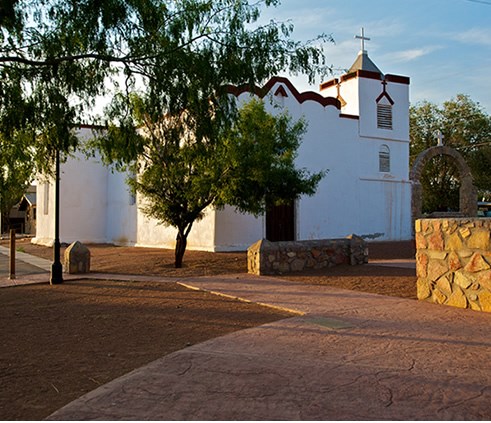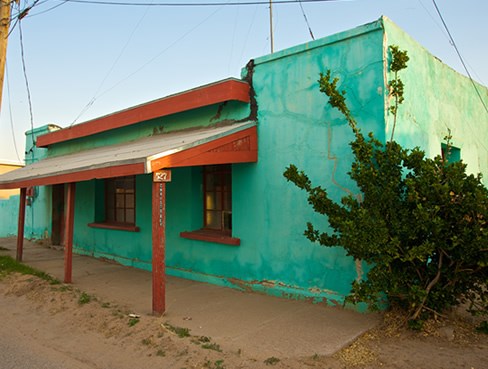Last updated: July 2, 2020
Article
New Mexico: Doña Ana Village Historic District
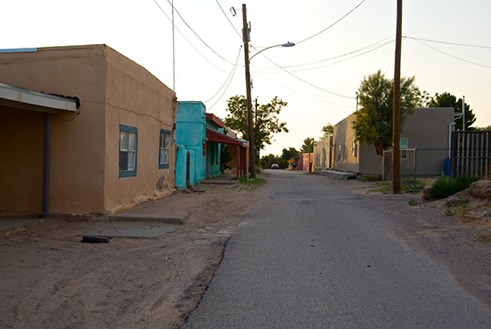
The dusty road that heads from New Mexico Highway 320 to the Doña Ana village church and plaza is named, appropriately enough, Dusty Lane. Even so, the true grit and glory of Doña Ana’s 19th-century heyday lies on what is now a narrow backstreet adjacent to the church. Cristo Rey Street leads down the original path of El Camino Real de Tierra Adentro and through the Doña Ana Village Historic District, the historic heart of the oldest permanent Hispano settlement in southern New Mexico.
El Camino Real in Doña Ana is now paved and peaceful, but when Doña Ana was established under the Mexican government in 1843, life in New Mexico was anything but calm. Persistent attacks by Apache and Comanche raiders had since the 1598 Spanish colonization of the province prevented permanent settlement of the Rio Grande valley between El Paso del Norte and Tomé. The 1821 transition from the Spanish to Mexican governments brought cultural and political upheaval, plus a flood of international trade goods along the newly unrestricted El Camino Real, then known as the Chihuahua Trail. The great Rio Grande flood of 1829 prompted Doña Ana’s founding as the first settlement in the fertile Mesilla Valley.
The deluge destroyed croplands from Tomé south along the floodplain to the Mexican state of Chihuahua, displacing residents and shifting the river’s course for 30 miles below El Paso del Norte. In 1839, 116 of those residents petitioned the Mexican government for El Ancón del Doña Ana (Doña Ana Bend Colony Grant), an arable stretch of unoccupied lands 50 miles to the north. The grant’s north end comprised the site of a colonial-era paraje (rest stop) on El Camino Real that, when raided by Indians in the 1690s, was reported to be the ranch of Doña Ana María de Córdoba. The woman’s history is mostly a mystery, but she is widely presumed to be the Doña Ana who inspired the village name.
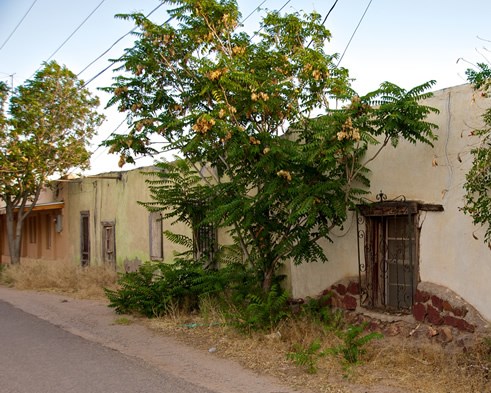
In the spring of 1843, 14 of the grant petitioners mustered the courage to risk Indian attack and move to Doña Ana. They situated the village on a plateau high above the floodplain, and after digging a diversion dam and a system of acequias (irrigation ditches), they constructed the community according to the traditional Spanish-Mexican village plan. Streets were laid out in 35-foot grids of 137-square-foot lots. Ultimately, many of these lots were subdivided, giving Doña Ana its shape as a grid of rectangular blocks.
Doña Ana’s first homes and buildings were along the plateau’s edge arranged as a cordillera, or linear village, which followed the path of irrigated lands. One-room, flat-roofed adobe houses were built shoulder to shoulder, some of them connected, alongside the corridor of El Camino Real. The houses abutted the street edge with windowless facades and heavily fortified doors, their unbroken lines forming substantial walls of defense. Exterior walls extended the buildings to the rear to form open-air courtyards. As families grew, rooms were added one at a time, often taking an L-shaped turn when reaching a corner or a lot line.
Doña Ana’s social and spiritual hub emerged at its northwest end. The Catholic Church of Nuestra Señora de la Candelaria (Our Lady of Candelaria), also known as Nuestra Señora de la Purificación (Our Lady of Purification), was constructed in stages beginning in 1852. Melding Spanish, Mexican and New Mexican architectural elements, the adobe cruciform church rises three times taller than its neighboring buildings and features a flat roof, wood vigas (ceiling beams) and a clerestory window at the transept. Redbrick cornices, parapet walls and a concrete bell tower were added in the early 1900s.
With slow but steady growth, Doña Ana led the long-awaited development of southern New Mexico. The only town on either side of the dreaded 90-mile Jornada del Muerto (Journey of the Dead Man), Doña Ana was an essential stop for travelers and traders on El Camino Real. The 1846 Mexican-American War brought U.S. soldiers and settlers to town, and within a few years following the 1848 signing of the Treaty of Guadalupe Hidalgo, Doña Ana became home to 600 citizens. The village expanded less formally beyond its historic center, and included general stores, saloons and a dance hall. A county courthouse was built along the main street in 1852, when the village was designated as the political seat of the new Doña Ana County.
Soon, Doña Ana County Justice of the Peace Don Pablo Melendres complained of village overcrowding. He proposed establishing an additional settlement at the south end of the Doña Ana grant, prompting many residents to follow El Camino Real to the new town of Las Cruces. Sixty other Doña Ana families, driven by anti-American sentiments, chose to cross the river back to the Mexico side of the Mesilla Valley. They founded the village of La Mesilla in 1848.
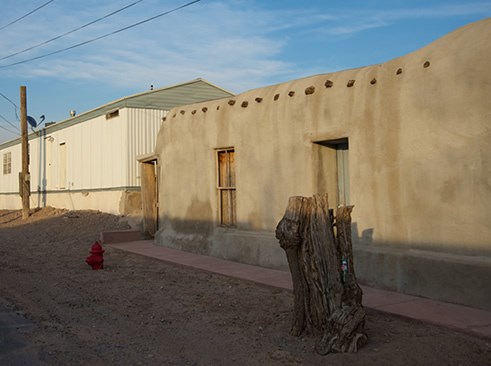
By 1853, troops had been moved south from Doña Ana to the new Fort Fillmore. La Mesilla, meanwhile, grew to 2,500 residents. In 1854, the Gadsden Purchase brought La Mesilla into the fold as a U.S. Territory. By the 1870s, La Mesilla was the county seat and had eclipsed Doña Ana as the valley’s leading center of trade.
The railroad’s arrival in the 1880s killed El Camino Real and Doña Ana’s commercial opportunities. The village’s last population spike took place in the 1920s and 1930s. Doña Ana remained a small agricultural town and retained its architectural integrity.
Today, in ambiance and architecture, Doña Ana is an exceptionally well-preserved example of a traditional rural 19th-century Hispano village of southern New Mexico. Although milled lumber, window glass and brick were integrated into most village houses and buildings in the late 19th century, and the 20th century brought mobile homes and other modern development, Cristo Rey Street is a largely undiluted version of the Spanish-Mexican plan.
Twenty-seven buildings in the village’s historic two-block core remain much as they were constructed in 1843. Our Lady of Candelaria church underwent a meticulous restoration in the 1990s as some 17,000 new adobe bricks shored up sagging walls. The stripping of concrete plaster, which had trapped moisture in the walls, returned the building to its traditional lime plaster exterior. The oldest church in southern New Mexico, the building continues to be an architectural highlight of the region.
The 2010 census listed 1,211 residents in Doña Ana, many of them descendants of the village’s pioneering founders. A stroll down El Camino Real reveals buildings in various states of repair and wear. As a distant train whistle cuts through the pleasant, small-town quiet, a visitor can almost feel the passage of time wafting through the village. Friendly residents wave from front porches and drives, and a mockingbird calls from above. It’s comforting to know that Doña Ana and El Camino Real are alive and well.
The Doña Ana Village Historic District is located five miles north of Las Cruces off Interstate-25 and just south of New Mexico Highway 320, in Doña Ana, NM. The Doña Ana Village Historic District is listed in the National Register of Historic Places. For more information, visit the Doña Ana County website.
Explore more history by visiting the El Camino Real travel itinerary website.
